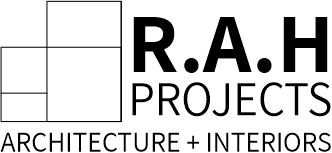Green Building Accreditation: Recognizing Sustainable and Environmentally Conscious Structures
In the pursuit of a more sustainable future, the construction industry has embraced the concept of green building. Green building accreditation programs have emerged as valuable tools for recognizing and promoting environmentally conscious structures. These programs assess and certify buildings based on their sustainable design, construction methods, energy efficiency, and overall environmental performance. Let’s explore the significance and benefits of green building accreditation in today’s world.
Green building accreditation programs, such as LEED (Leadership in Energy and Environmental Design) and BREEAM (Building Research Establishment Environmental Assessment Method), provide a standardized framework for evaluating the environmental impact and sustainability of buildings. They consider a range of factors, including energy usage, water efficiency, indoor environmental quality, materials and resources, site selection, and innovation.
The process of obtaining green building accreditation involves rigorous assessment, documentation, and verification of various aspects of a building’s design, construction, and operation. Accreditation programs typically award different levels of certification, such as Platinum, Gold, Silver, or Certified, based on the level of sustainability achieved.
Accredited green buildings offer numerous benefits to both the environment and building owners. Here are some key advantages:
- Environmental Impact: Green buildings significantly reduce the environmental impact of the built environment. They consume less energy and water, generate less waste, and utilize sustainable materials. By minimizing greenhouse gas emissions and conserving natural resources, green buildings contribute to mitigating climate change and preserving the planet for future generations.
- Energy Efficiency: Green buildings are designed to optimize energy performance. They incorporate energy-efficient systems, such as advanced insulation, high-efficiency HVAC (heating, ventilation, and air conditioning) equipment, and smart controls. Reduced energy consumption not only benefits the environment but also translates into cost savings for building owners through lower utility bills.
- Improved Indoor Environmental Quality: Green buildings prioritize the health and well-being of occupants. They incorporate features such as ample natural lighting, proper ventilation, use of low-VOC (volatile organic compound) materials, and enhanced thermal comfort. This results in improved indoor air quality, reduced exposure to toxins, and enhanced occupant satisfaction and productivity.
- Enhanced Market Value and Marketing Advantage: Green building accreditation adds value to properties by signaling their sustainability and environmental performance. Accredited buildings often command higher market values, attract environmentally conscious tenants, and benefit from enhanced marketing opportunities. They demonstrate a commitment to responsible practices and align with the growing demand for sustainable spaces.
- Regulatory Support and Incentives: Green building accreditation aligns with government initiatives and regulations aimed at promoting sustainable development. Many jurisdictions offer incentives, grants, or tax benefits to encourage the construction of green buildings. Accredited buildings may qualify for these incentives, further incentivizing their adoption.
- Industry Leadership and Innovation: Green building accreditation fosters industry leadership and innovation. By pushing the boundaries of sustainable design and construction, accredited buildings serve as showcases for innovative technologies, materials, and practices. They inspire further advancements in sustainable building and contribute to the overall transformation of the construction industry.
Green building accreditation plays a crucial role in driving the adoption of sustainable practices and promoting environmentally responsible construction. It provides a recognized and standardized framework for evaluating and certifying the sustainability performance of buildings. Through the implementation of green building principles, structures can reduce their ecological footprint, enhance occupant well-being, and contribute to a greener, more sustainable future.
As society continues to prioritize sustainability, green building accreditation programs are becoming increasingly relevant and influential. By recognizing and rewarding environmentally conscious buildings, these programs encourage the construction industry to embrace sustainable practices and contribute to a more sustainable built environment.
Motivate others and change the way we feel about ourselves. This is why I find them so interesting and crucial on our paths to success mauris accumsan eros eget libero posuere vulputate. Etiam elit elit, elementum sed varius at, adipiscing vitae est. Sed nec felis pellentesque, lacinia dui sed, ultricies sapien. Pellentesque orci consectetur vel posuere posuere, rutrum eu ipsum. Cost is important.
Inspirational quotes have an amazing ability to motivate others and change the way we feel about ourselves. This is why I find them so interesting and crucial on our paths to success.
The leap into electronic typesetting, remaining essentially unchanged. It was popularised sheets containing Lorem Ipsum passagese.
